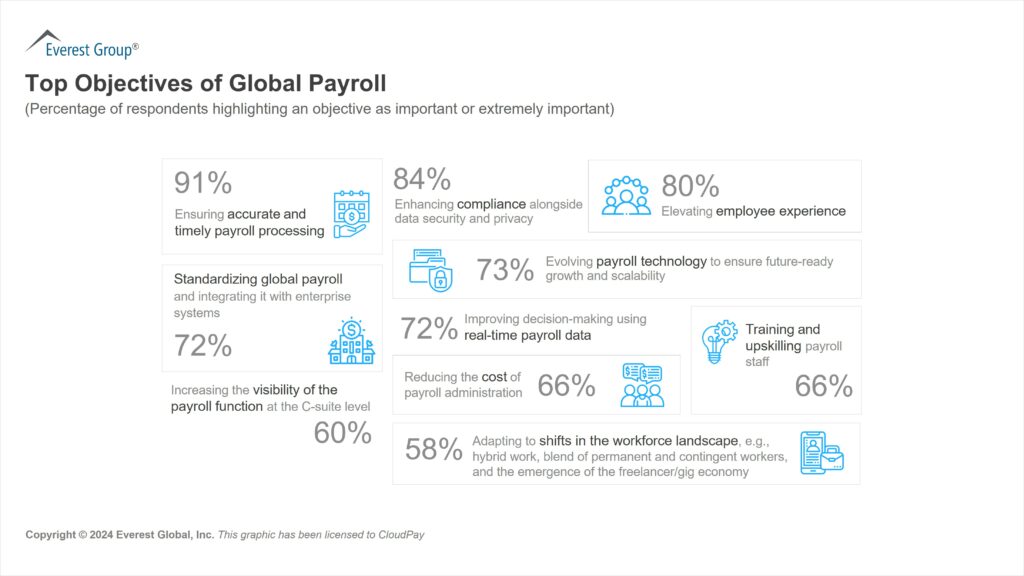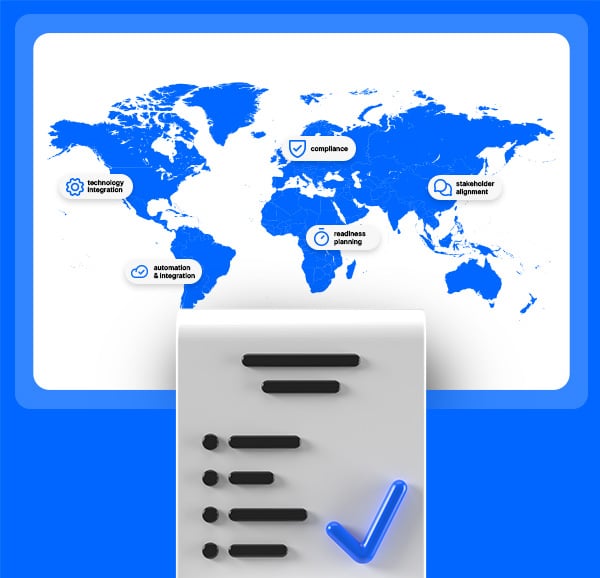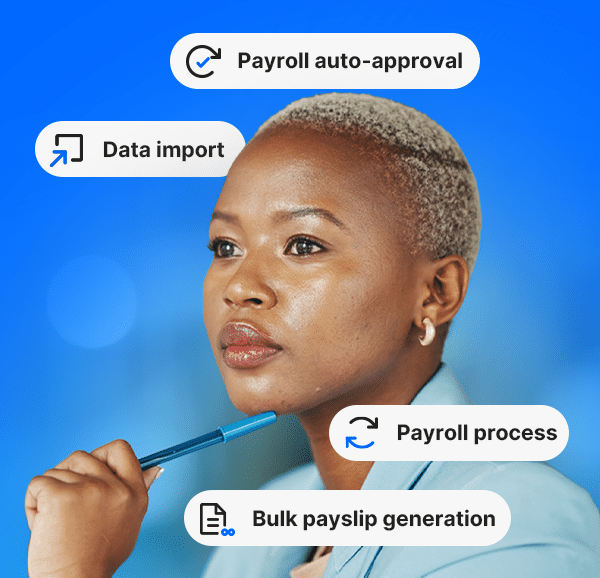The scale at which payroll is changing is gradually becoming more understood. The horizons of payroll are expanding at pace – beyond traditional core objectives of accuracy, timeliness and compliance – towards more strategic, data-driven and wide-reaching value that supports every area of an organization.
While this change is making payroll an increasing force for good, it does bring with it added elements of complexity. It’s no surprise, therefore, that more and more businesses are turning to payroll services outsourcing, and partnerships with third-party payroll providers to support them in their expanded endeavors.
For example, according to a recent Everest Group report, 74% of organizations surveyed now outsource employee payments, underlining the increasing need for in-house teams to bring in further solutions and expertise.
But as payroll has changed, the nature of this outsourced help is changing, too.
How payroll’s aims and provider relationships have changed
Everest Group’s research underlines the more diverse nature of modern payroll. Ensuring accurate and timely payroll processing remains the number one objective (as agreed by 91% of respondents). However, the next two most commonly cited objectives point to the more strategic role that payroll now fulfills: enhancing compliance alongside data security and privacy (84%), and elevating the employee experience (80%). This reflects the fast-changing world of business, where new ways of working and new employee benefits expectations mean that payroll has to be fast, flexible, certain, and insightful.
Achieving all this, while also navigating an increasingly complex regulatory landscape, is constantly putting greater expectations on payroll teams. For many organizations, global payroll demands have become too much to reasonably manage in-house, especially if they don’t have access to the latest technologies that drive efficiencies through automation and integration. This can lead to a lack of visibility into global payroll operations (as cited by 45% of respondents in the Everest Group report), a reactive approach to problem-resolution rather than a proactive one, and compromised employee experiences across the workforce.
It’s for this reason, perhaps above all, that more and more organizations are turning to expert providers to help fill the gaps in their capabilities.
Where payroll providers are making the biggest difference
Given the complexity involved in modern payroll, it’s becoming increasingly clear that an interconnected approach is the best way forward. This means working closely with payroll providers to help better manage pay processes, generate time and cost savings, and leverage country-specific expertise to iron out local inconsistencies.
It should also involve the deployment of unified pay solutions that consolidate global payroll and payments into a single ecosystem, to maximize data visibility and control while minimizing errors and global processing times. A unified pay platform can also incorporate innovations such as Earned Wage Access and financial wellness programs, so that the functional efficiency and accuracy of payroll is backed up by the intuitive and autonomous service that employees increasingly expect.
According to “Reaping the Benefits of Unified Pay Solutions, Everest Group, 2024,” a good unified pay solution is built upon three foundational pillars:
- Platform: automated technology that seamlessly integrates payroll, payments and human resources systems on a global scale
- Data: centralization of data to consolidate relevant HR, payroll and payments information for real-time visibility, helping generate greater confidence in payroll across the workforce
- Expertise: in-depth knowledge of payroll processes and requirements in countries around the world, helping the business stay on top of all of its regulatory and compliance requirements and enabling insights of high strategic value

In summary: how to identify the right unified pay solution provider
Partnering with a unified payroll solution provider is one of the most significant and long-term investments that any business will make, so it’s vital to get it right. One of the key factors to take into account is how the provider will support your organization tomorrow as well as today. They should be able to demonstrate how they will continue to innovate and stay aligned with the pace of the enterprise, and the changing demands of the workforce.
Other areas that should be considered include (but are rarely limited to):
- Technology: availability of a single platform for managing global payroll and payments, with full HR system integration and easy visibility of payroll performance
- Knowledge: experience and expertise across payroll regulations in every country, and the ability to support Earned Wage Access, payment wallets, international payments, and other services and innovations
- Security: robust measures to protect sensitive employee data and comply with security requirements, however business and payroll needs scale in the future
Working with a provider that can deliver on the above, and enable continuous tracking and benchmarking of payroll performance, can help deliver the insights, efficiencies and compliance vital for modern business. What’s more, it enables a solid foundation for payroll to continue to innovate and scale with the business as it grows in the future.
Find out more on the value of unified pay solutions by reading the full Everest Group report, then discover the CloudPay approach here.


